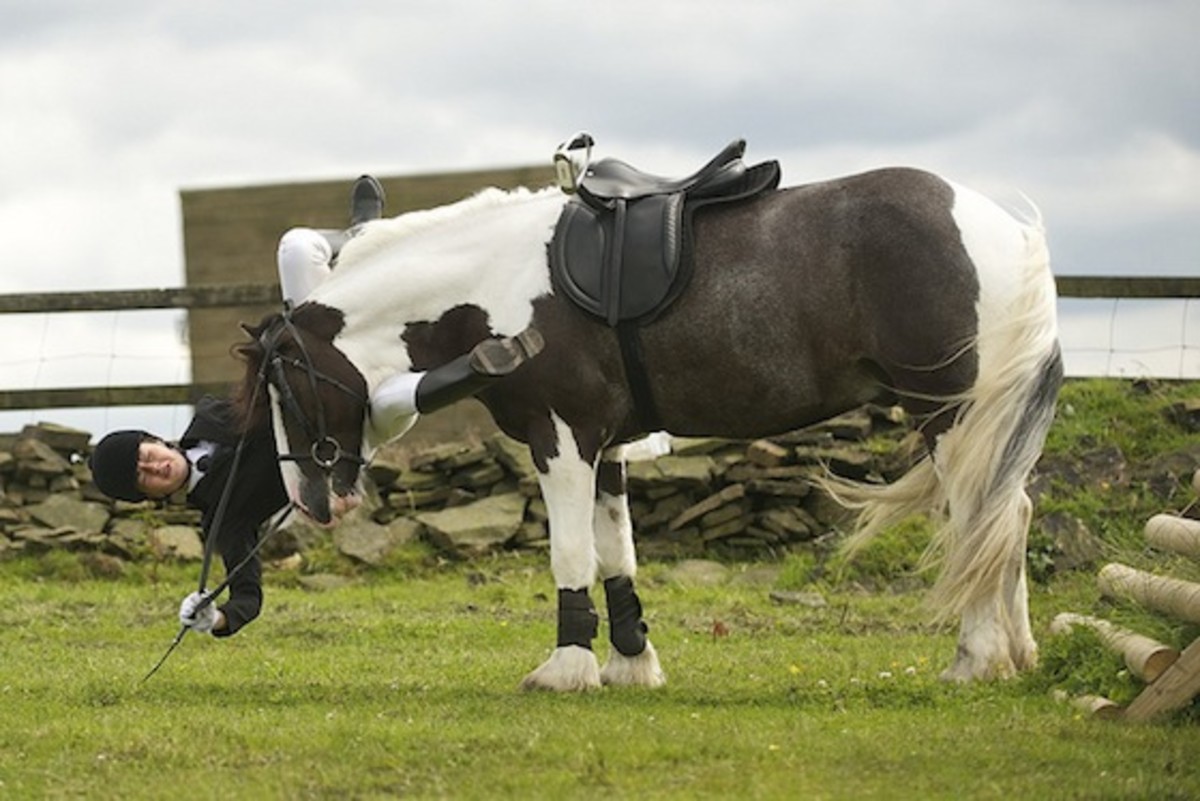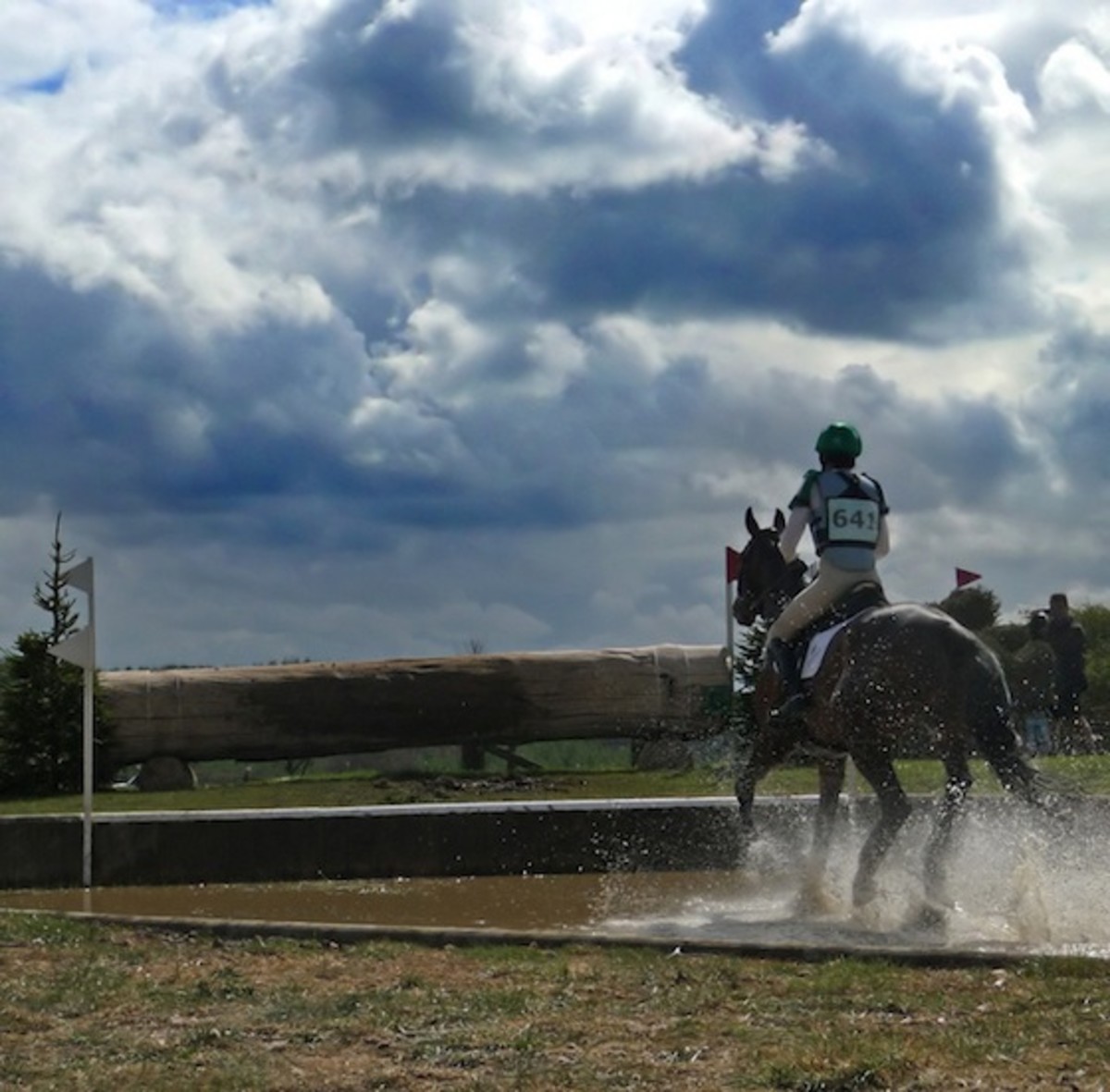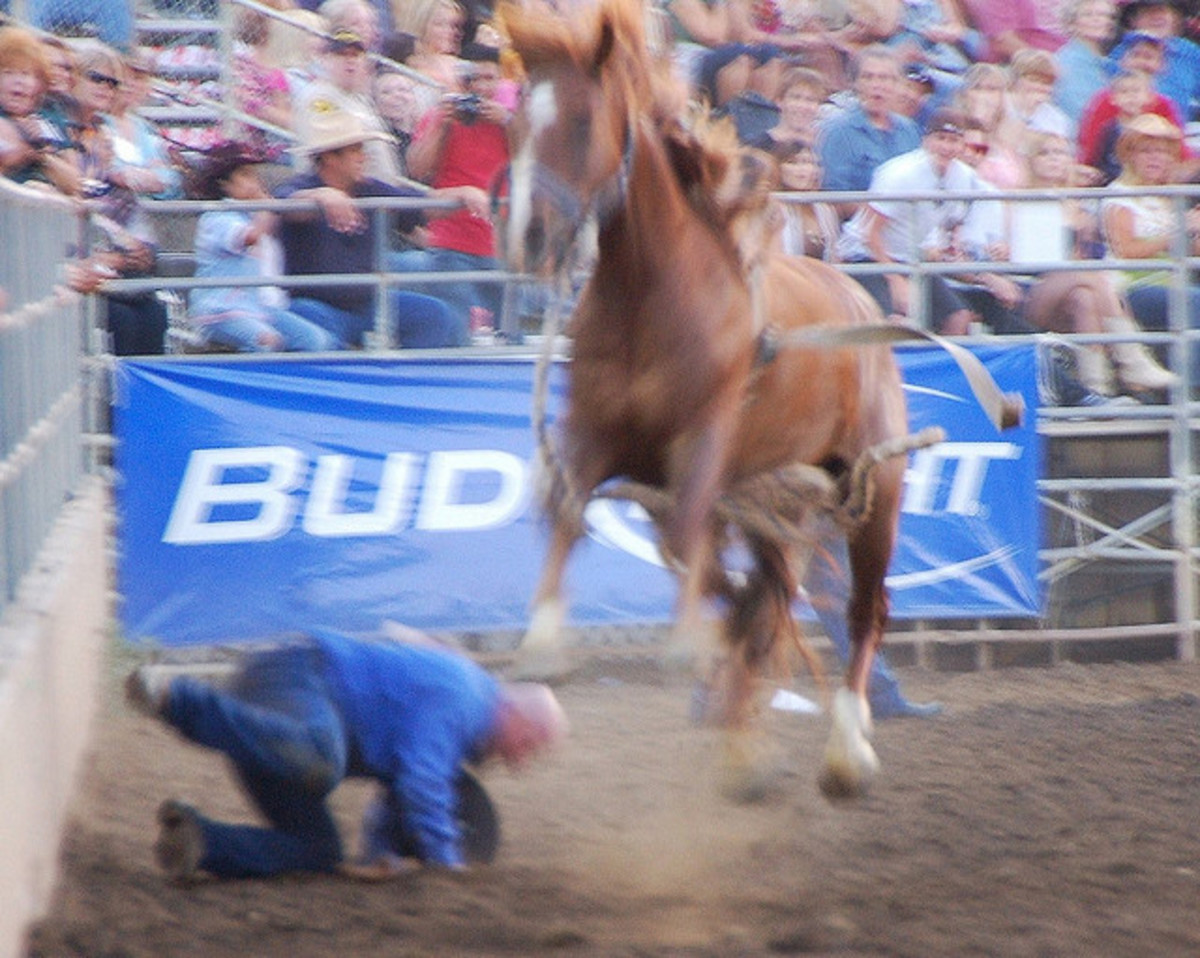Equestrian Injury: A Trauma Surgeon Shares His Stats
- September 19, 2017
- ⎯ Fran Jurga
The next time you fall off your horse, take heart: someone cares.

There’s that moment when you take a gasp of breath and try to use your nervous system to see if all your limbs are working. Check. Then you move your spine. Check. You sit up. Check. Look at your clothes for blood. Check.
Your head is spinning but you get up anyway, mentally reflecting on what a good investment that new helmet was. You know you’re going to hurt tonight.
But first things first: you’ve got to catch that horse.
What about when you don’t get up? Once you’re rolled into a hospital emergency room on a stretcher, you become a statistic. And someone, somewhere is checking off his or her own list based on your symptoms, diagnosis, prognosis and the cause of your injury in the first place.
Congratulations, your injury will live happily ever after in an equestrian-injury database, and decision-makers might even analyze something from those numbers to make our sports and recreation safer.

Equestrian medical cases can be filed and misfiled in many ways. Some equestrian injuries end up under sport-related injuries, while others are categorized as workplace injuries. Still others aren’t recorded by originating cause at all.
But a doctor on the west coast is watching for equestrian injuries and helping to build more data to help us understand both how dangerous (or safe) riding a horse can be and what our injuries have in common.
John Mayberry, MD of the Oregon Health and Science University in Portland, Oregon is our man in the healthcare stat room. Luckily for Portland equestrians, he’s also one of the surgeons in the trauma center when the ambulance drops you off.
“I became interested in studying the risk of and factors associated with equestrian injuries through my work as a trauma surgeon and also through my two sisters, both of whom are equestrians,” Dr Mayberry told The Jurga Report. ?He went on to explain his family’s deep roots in the American West, and how he and his sisters’ heritage is forever entwined with horses: one great-grandfather was known to have been a horse thief and the other courted his great-grandmother by riding his horse alongside her family’s wagon on the Oregon Trail.
Mayberry’s first study, published in 2007 in the journal Trauma, shared the somber statistical prediction that one in every five equestrians will be seriously injured during their careers, and that the risk decreased with levels of expertise and experience, apparently regardless of time spent in the saddle.
Novice riders experienced a three-fold greater incidence of injury over intermediates, a five-fold greater incidence over advanced riders, and nearly eight-fold greater incidence over professional equestrians. Approximately 100 hours of experience are required to achieve a substantial decline in injury. (Mayberry et al, 2007)
So if you survive the beginner phase, your odds are better that you’ll survive, period.
Statistically speaking, equestrianism isn’t as high risk an activity as many think–at least not according to the Portland statistics.
Dr Mayberry’s latest study, a review analysis of equestrian injuries from 2001 to 2008, has just been published in the medical journal?The American Surgeon. If you’re expecting a lot of dry statistics, consider the fact that the study is enhanced by Mayberry’s co-author’s motivation. “Kristina Guyton was a medical student in Chicago who was in Oregon visiting her parents when her long-time horse kicked her in the abdomen and she required emergency surgery here at OHSU,” Mayberry said. ?”I met her on the trauma ward while she was recovering from surgery and right there recruited her to help me with the second study!”

What facts jumped out at him from his numbers? “I noticed that we were getting a fair number of equestrians with serious injuries and I noticed that most were not wearing helmets,” he reports. ?”I also wanted to know what factors were associated with injury incidents to get a better idea of prevention strategies.”
Here are some of Mayberry’s latest statistics, summarized from the paper:
- 231 patients with a mean age of 38 years and a mean Injury Severity Score of 11 (range, 1 to 45) made up the study.
- Mean length of hospital stay: 5.5 days.
- 59 patients (25% of injured) required 84 surgeries.
- 20 per cent of riders wore a helmet when injured; of the 172 patients not wearing a helmet while mounted, 38 per cent received potentially preventable head injuries.
- 3 patients died, of which two were the result of intracranial (brain) hemorrhage in riders not wearing a helmet.
- Mean hospital charge was $29,800 for a total of $6.9 million.
- 40 per cent reported that poor environmental factors contributed, 30 per cent reported poor horse and rider pairing, and 9 per cent reported equipment failure.
- 59 per cent reported long-term disabilities.
Mayberry and Guyton collaborated on a “Pre-Riding Safety Checklist”, which they hope will be adopted for wide use within the horse industry. The next phase of research will test its validity.
Their work on these statistics has not been without controversy. “We have had a few equestrians express anger toward us because of our advocacy for safety measures,” Mayberry reported. ?”They are worried my efforts will encourage legislation forcing adults to wear helmets.”
If you’d like to find out more about Dr. Mayberry’s projects on equestrian injury, or how to utilize his safety checklist in your sport, business or organization, send an email to The Jurga Report and we’ll forward it on.
To learn more:
Head to the library to read full text copies of these papers to compare statistics on equestrian-related injury:
Guyton?K,?Houchen-Wise?E,?Peck?E,??Mayberry?JC.?Equestrian injury is costly, disabling, and frequently preventable: the imperative for improved safety awareness. The American Surgeon 2013 Jan; 79(1):76-83
Mayberry JC, Pearson TE, Wiger KJ, Diggs BS, Mullins RJ. Equestrian injury prevention efforts need more attention to novice riders. J Trauma. 2007 Mar;62(3):735-9
Hasler RM,?Gyssler L,?Benneker L,?Martinolli L,?Sch?tzau A,?Zimmermann H,?Exadaktylos AK. Protective and risk factors in amateur equestrians and description of injury patterns: A retrospective data analysis and a case – control survey. J Trauma Manag Outcomes. 2011 Feb 4;5:4. (University of Berne study in Switzerland)
Lim J, Puttaswamy V, Gizzi M, Christie L, Croker W, Crowe P. Pattern of equestrian injuries presenting to a Sydney teaching hospital. ANZ J Surg. 2003 Aug;73(8):567-71. (University of Sydney study in Australia)
Top photo by Tim Simpson, eventer by Phil Atkin, rodeo shot by Bill Gracey.





